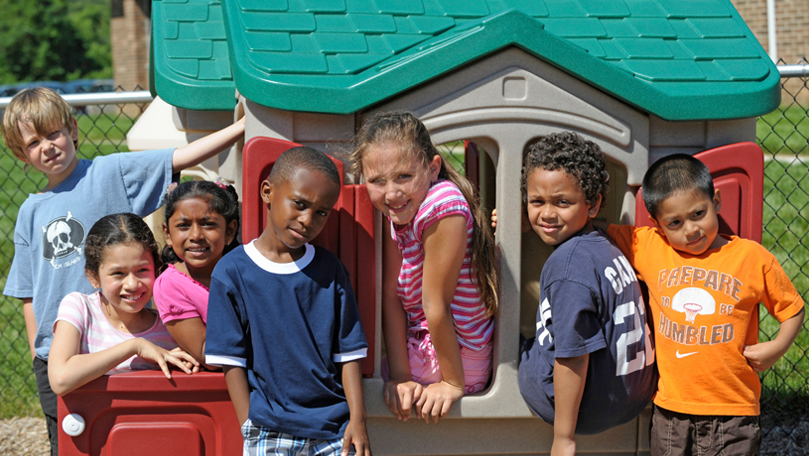CONTACT: Nancy Parello, Communications Director, (973)-643-3876, (908) 399-6031, nparello@acnj.org
New Jersey children in certain racial and ethnic groups face considerably more obstacles on the path to achieving lifelong success, according to a new report from the Annie E. Casey Foundation.
The KIDS COUNT® policy report, Race for Results: Building a Path to Opportunity for All Children, found that New Jersey’s Asian-American children rated highest on the foundation’s new “Race for Results” index, with a score of 903 out of a possible 1,000. White children scored second highest at 827, followed by Hispanic children at 502 and black children at 455. The scale compares how children are faring on key milestones across racial and ethnic groups at the national and state level.
The statistics are intended to better inform policymakers when making critical decisions about policies and programs that can benefit all children while guiding strategic investments to improve all children’s chance for success, Casey officials said.
By 2018, children of color will represent the majority of children in the United States. The report highlights serious concerns that African-American, Latino, Native American and some subgroups of Asian-American children face profound barriers to success and calls for an urgent, multi-sector approach to develop solutions.
“This first-time index shows that many in our next generation, especially kids of color, are off track in many issue areas and in nearly every region of the country,” said Patrick McCarthy, president and CEO of the Casey Foundation. “Race for Results is a call to action that requires serious and sustained attention from the private, nonprofit, philanthropic and government sectors to create equitable opportunities for children of color, who will play an increasingly large role in our nation’s well-being and prosperity.”
The index is based on 12 measures of a child’s success for each stage of life, from birth to adulthood, in four areas — early childhood, education and early work, family supports and neighborhood context.
Although New Jersey children scored higher than national averages across all racial and ethnic groups, the data reveal deep disparities within the state based on a child’s race or ethnicity.
For example, nearly 70 percent of non-Hispanic Asian/Pacific Islander 4th graders and 53 percent of white students read proficiently in 2013, compared to just 21 percent of Latino children and 22 percent of black children. This lack of early literacy, critical to school success, adversely affects future prospects. Young Hispanic and black adults, ages 25 to 29, were far less likely to have completed an associate’s degree or higher than white or Asian young adults during the period of 2010-2012.
Child poverty was also far more prevalent among black and Hispanic children in the 2010-2012 period. Roughly half of black children and 46 percent of Hispanic children lived in families earning at least twice the poverty level, compared to 83 percent of white and Asian children.
On the positive side, during that same period, black children were most likely to be enrolled in nursery school or preschool at 76 percent, compared to 74 percent of white children, 72 percent of Asian children and 67 percent of Hispanic children.
“These are sobering statistics,” said Cecilia Zalkind, executive director of Advocates for Children of New Jersey, which produces the state-level Kids Count reports. “It is critical that our state, county and city leaders formulate responses that will give all children the chance to grow up safe, healthy and educated. Not only is this good for children and families, it is good for our communities and the state as a whole.”
The report makes four policy recommendations to help ensure that all children and their families achieve their full potential:
- Gather and analyze additional racial and ethnic data to inform policies and decision making;
- Utilize data and impact assessment tools to target investments to yield the greatest impact for children of color;
- Develop and implement promising and proven programs and practices focused on improving outcomes for children and youth of color; and
- Integrate strategies that explicitly connect vulnerable groups to new jobs and opportunities in economic and workforce development.
To view the full report, visit http://www.datacenter.kidscount.org/
The Annie E. Casey Foundation creates a brighter future for the nation’s children by developing solutions to strengthen families, build paths to economic opportunity and transform struggling communities into safer and healthier places to live, work and grow. For more information, visit www.aecf.org. KIDS COUNT® is a registered trademark of the Annie E. Casey Foundation. In addition to the Race for Results Index, the Casey Foundation’s KIDS COUNT Data Center has up-to-date and comprehensive national, state and local statistics on child well-being.


